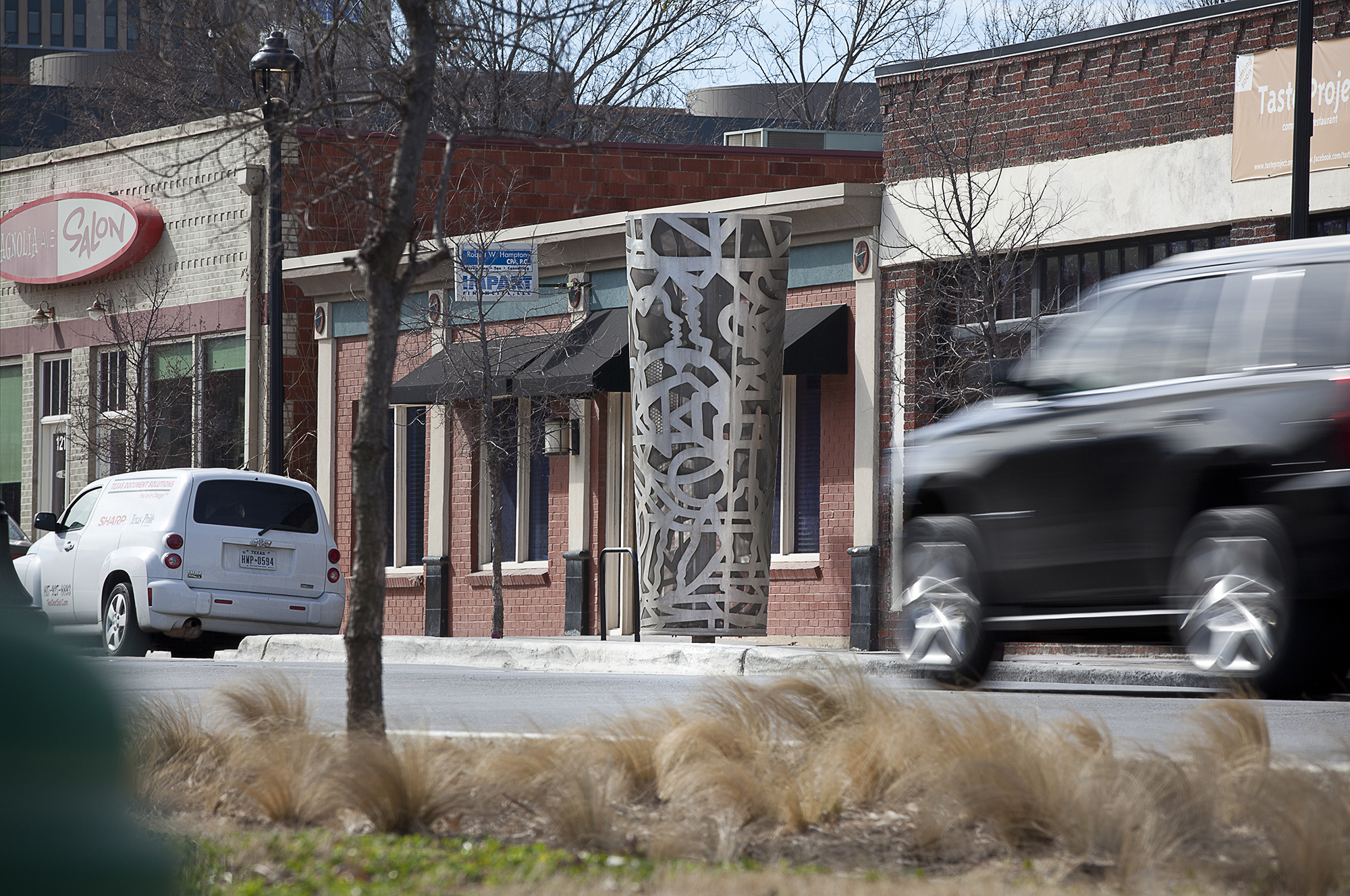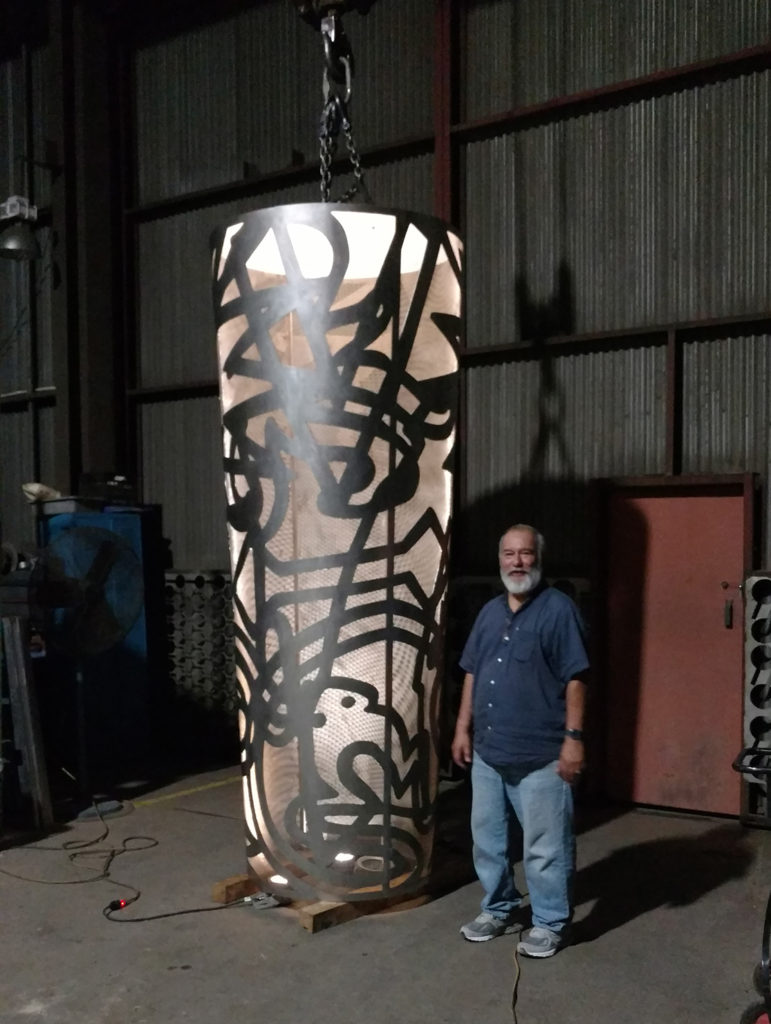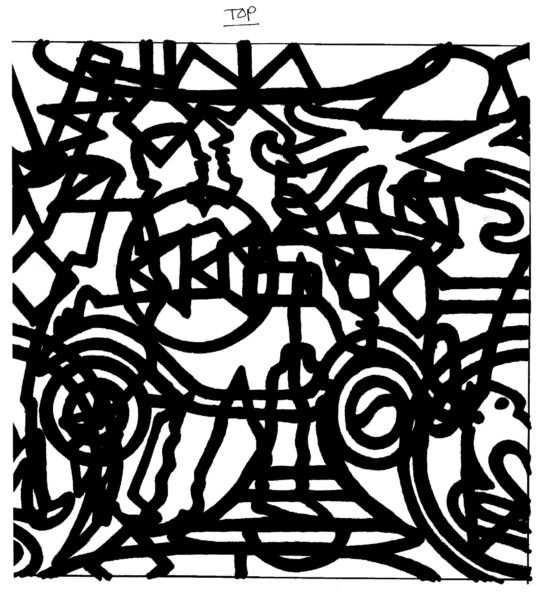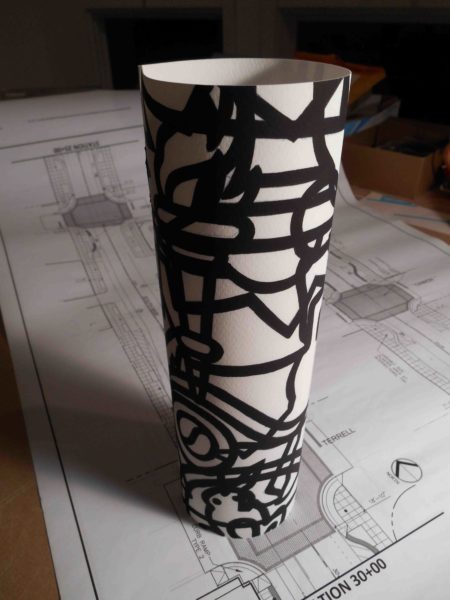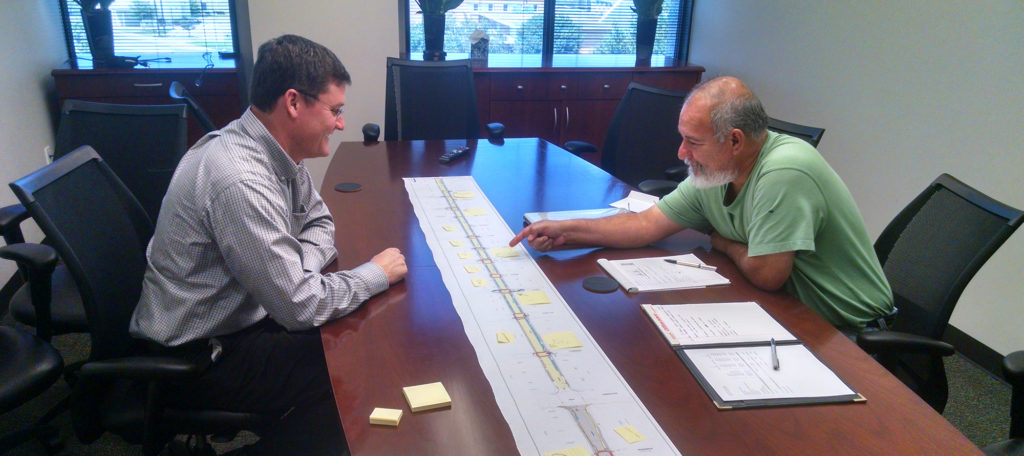FWPA: Public spaces, especially older or historic ones, can have substantial context to offer. How did you research the site of your public art project?
BH: One of the inherent modes of working in public art are the community meetings. These can be very helpful, educational, and give insight into the sensibilities of the community. However, the artist should always conduct additional research on their own. This project was done through visits to the site of where the work was to be installed which included taking photographs of the neighborhood and making notes about what was and is there. To get an idea of the history of that area and what South Main was like in the early years, I relied on imagery and information available on the internet.
What considerations were unique to your site?
The site – streets, sidewalks, and utilities – was going to be partly demolished and renovated. On paper this was not as easy to visualize, and I could not identify what was going to happen on the construction plans. I thought it was good to have a record of what was and/or still is there. In fact, some photographic imagery that I was using became historical due to demolition. What I could not do was predict what would come to the site after the work was completed which was beyond anyone’s projections.
How did your project address the complexities of placing contemporary art at a site with history?
I incorporated images that existed at the time before the street was torn up. I photographed things that intrigued me: a combination of signs and shapes, new and old. The material used was brushed stainless steel, which has a contemporary look but also a bit transparent so that one could see thru parts of the shapes within the cone design. This helped in integrating the design with the surrounding environment. The interior lighting in the work also transformed the piece into a beacon along the South Main. I think contemporary and historical components can be intertwined to great effect.
Any work done successfully becomes part of the fabric of the site and illuminates what is unique in that community and reflective of the city overall. – Benito Huerta, Artist

